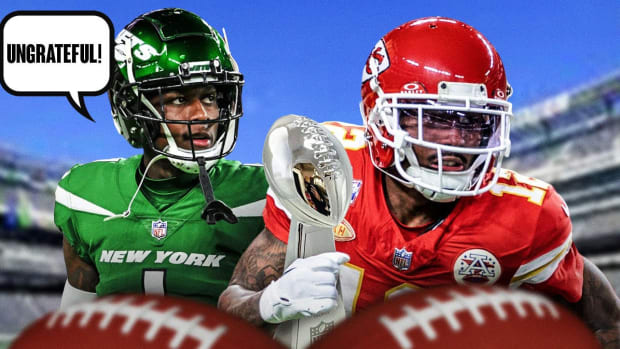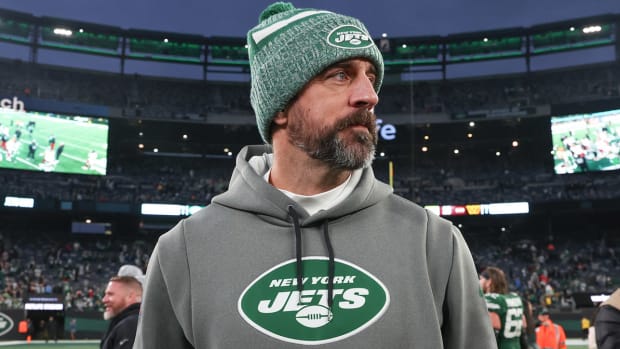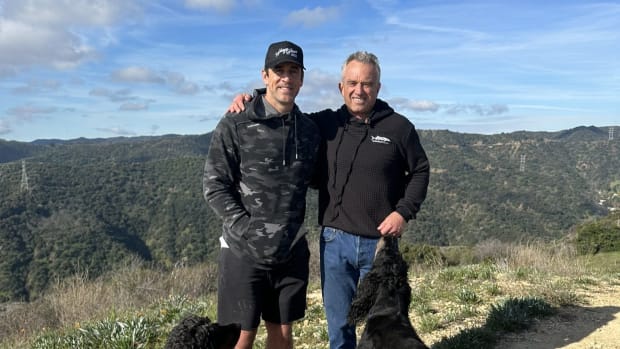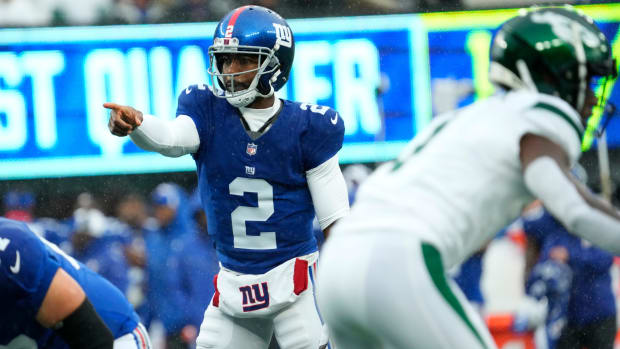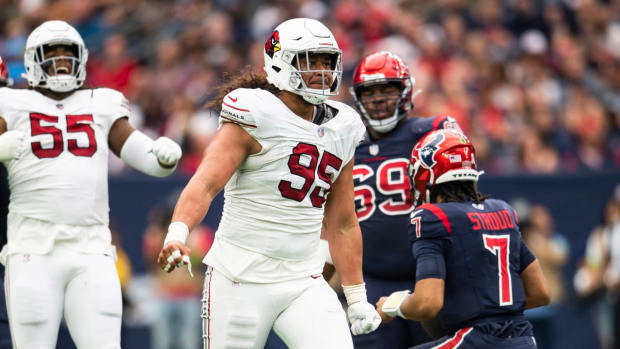New York Jets NFL Draft profile: Wisconsin running back Jonathan Taylor
It would be a luxury, but Jonathan Taylor has the potential to be an impact player for the New York Jets.
The Wisconsin running back, one of the top backfield stars in college football the past two years, wouldn’t necessarily fit any need coming into the draft for the Jets. But he would be an exciting pick nonetheless to partner with a young quarterback in Sam Darnold.
The Jets seem pretty set at the top of the backfield rotation, having signed Pro Bowl running back Le’Veon Bell last offseason. But here is the caveat: Bell was signed by former general manager Mike Maccagnan and not Joe Douglas. And while Douglas has endorsed Bell’s presence with the team both on and off the field, the Jets might want to go younger and cheaper at some point.
The Jets could certainly find a young running back in the middle rounds of the NFL Draft, with A.J. Dillon (Boston College) and Cam Akers (Florida State), given his production in college a player like Taylor might be enticing.
He can run between the tackles and churn out tough yards. But Taylor also has elite speed and the ability to break open plays in the open field.
The SI Big Board: Taylor checks in at No. 29.
The lowdown on Taylor: Along with J.K. Dobbins (Ohio State) and DeAndre Swift (Georgia), Taylor is in the top echelon of running backs in this draft class. He had outstanding production at Ohio State, twice topping 2,000 rushing yards his past two seasons (his freshman year he rushed for 1,977 yards).
The issue on Taylor is the amount of wear and tear on him already, having 926 rushing attempts already.
He is patient in the backfield, well-built and has plenty of speed once he gets out in the open. While not a tremendous receiver out of the backfield he is certainly solid there.
Coming into the season, Taylor was considered a strong and viable candidate for both the Heisman and the Maxwell Award.
Where he fits for the Jets: He doesn’t, at least not with more pressing needs on the table. The Jets desperately need a franchise-caliber left tackle and could find that solution at No. 11 in the first round.
In the second round (No. 48), Taylor will almost definitely be off the board. He is likely the second or third running back taken after Swift. If he falls to the second round, however, that is where things get interesting.
The Jets could be tempted to move up and get a generational running back, much like the New York Giants did across town in selecting Saquon Barkley in the 2018 draft.
Next year, Bell’s cap hit goes down significantly, costing $4 million in dead money in 2021 if he is released (and $2 million the next year). Should Taylor fall out of the first round and start to slip a few spots into the second round, here is where the Jets could be intrigued.
They could stay put and address any number of issues, including wide receiver or cornerback or edge rusher (assuming they go left tackle in the first round). Douglas could also wait and see if Dobbins is available in the second round if he rates the running back that high.
Or the Jets could try and move up to get Taylor. It will cost them draft capital which makes this scenario less likely.
But the Ravens, of which Douglas is an Ozzie Newsome disciple, have always had talented running backs. In the 2008 NFL Draft when Douglas would have been a scout with the organization, they took Rutgers standout Ray Rice in the second round, securing the tough as nails tailback for a career that would include three Pro Bowl selections.
If the Jets feel that they need an understudy for Bell to develop into a starter, then Taylor would certainly transform the balance of the offense. It would likely mean ignoring other pressing issues, however.

